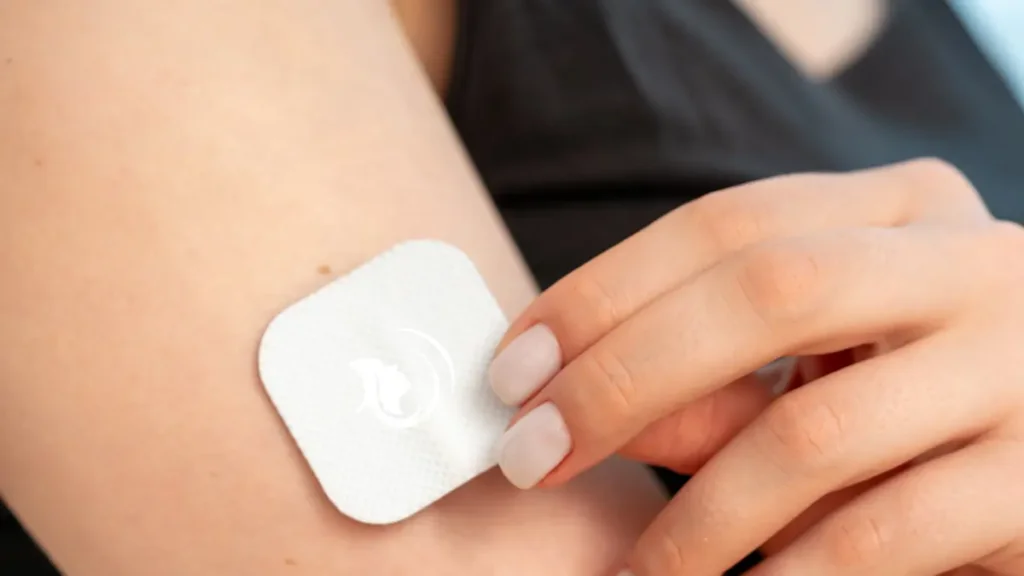Microneedling has been a prominent procedure in the beauty industry for quite some time, known for its efficacy in promoting skin rejuvenation and reducing signs of aging. However, the recent introduction of microneedling patches has revolutionized the way people approach skin care, offering a less invasive alternative with similar benefits. These innovative patches have quickly become a trend, favored for their ease of use and quick results.
How do Microneedling Patches Work?
The patches are made up of ingredients that mimic the action of microneedling and although they can achieve the same type of results as traditional microneedling, you will need to be consistent in your use of them, applying them 2-3 days for 4 weeks.
As well as micro-needling your skin, the patches are made from a mix of hyaluronic acid, amino acids and peptides which brighten the skin and render it healthy-looking.
Immediate and Long-Term Benefits
One of the standout features of microneedling patches is the rapid manifestation of results. Users often notice improvements in their skin’s appearance within just 20 minutes of application, making these patches an excellent choice for pre-party or special event preparations. For best results, experts recommend wearing the patches for 12 hours overnight, allowing the active ingredients ample time to penetrate deeply and work their magic.
Microneedling patches offer several benefits, including:
- Quick Treatment: Noticeable results in as little as 20 minutes.
- Healthier Skin: Enhanced absorption of beneficial ingredients promotes overall skin health.
- Glowing Complexion: Regular use results in a brighter and more radiant complexion.
The patches are suitable for all skin types and very straightforward to use. Apply them over the area in question such as under your eyes or where your smile lines sit and employ very gentle pressure. The packaging will tell you how long to leave them on for and this will vary only very marginally from brand to brand; skin experts agree that it can be more effective to wear them in your sleep.
Is There Any Recovery Period?
Microneedling patches can be used without any pain or damage to the skin and you won’t need to take any time out – you can go back to your normal activities immediately. Microneedling patches won’t address deeper wrinkles but if you’re looking for a non-invasive solution to achieve mild anti-ageing results, they’re a fantastic option.
Why Choose Needle Patches Over Traditional Microneedling?
The patches are a great alternative for people who have a bit of a phobia of needles. Traditional microneedling requires a dermatologist or cosmetic therapist to administer the treatment, whilst the patches can provide the same benefits (to a certain extent) with less hassle.
When trying any new treatment on your face, make sure you do a patch test beforehand and if you’re pregnant or have sensitive, broken or damaged skin, it’s recommended that you speak to your GP or a dermatologist beforehand.
Safety and Precautions
As with any new skincare treatment, it’s crucial to conduct a patch test before full application to ensure there are no adverse reactions. This is especially important for individuals with sensitive, broken, or damaged skin. Pregnant women or those with specific skin conditions should consult with their GP or a dermatologist before using microneedling patches.
Game-Changer
Microneedling patches have emerged as a game-changer in the world of skincare, offering a non-invasive, effective, and convenient solution for those seeking to rejuvenate their skin. With the ability to deliver rapid results and enhance skin health, these patches are becoming a staple in beauty routines worldwide. As always, it’s essential to choose reputable products and consult with professionals to ensure the best and safest outcomes for your skin.
*Microneedling as an aesthetic treatment is available in various clinics across London, but a well-established Dermapen specialist in Harley Street is Dr Kalli Nikolaidou of Aesthetic Derma Clinic.


